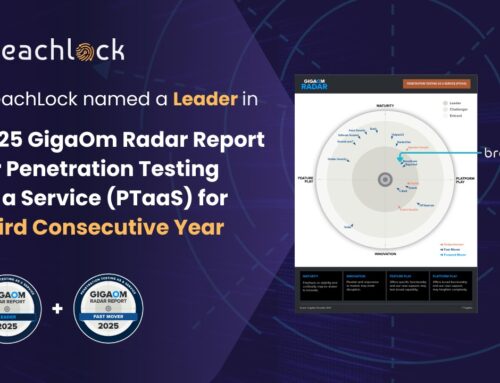
WestJet Confirms Data Breach – Customers Personal Information Exposed
The digital landscape is a battlefield, and even the most vigilant organizations can fall victim to sophisticated attacks. This stark reality has once again been underscored by the recent cybersecurity incident at WestJet, Canada’s second-largest airline. A breach, detailed in a report by Cybersecurity News, has exposed sensitive personal information belonging to some WestJet customers, raising critical questions about data security and the evolving threat landscape.
WestJet Confirms Data Breach: A Deeper Look
On June 13, 2025, WestJet’s security team detected anomalous activity within its internal systems. This discovery quickly escalated into the confirmation of a cybersecurity incident initiated by a “sophisticated third-party actor.” While the airline asserts that the breach has since been contained and remediated, the unfortunate truth is that sensitive personal data has been exfiltrated, or stolen, from their systems.
The specific types of personal information exposed have not been fully enumerated in the initial public statements, but such breaches typically involve data elements like names, contact information, booking details, and potentially even payment-related data. The incident underscores the persistent challenge organizations face in protecting customer data from determined attackers.
Understanding the Attack Vector and Threat Actor
The term “sophisticated third-party actor” suggests a well-resourced and capable adversary, likely a state-sponsored group or a highly organized cybercrime syndicate. These groups often employ advanced persistent threat (APT) techniques, which involve prolonged and covert network penetration to achieve their objectives. While WestJet has not disclosed the precise attack vector, common methods for such breaches include:
- Phishing and Spear-Phishing: Targeting employees with malicious links or attachments to gain initial access to the network.
- Exploiting Software Vulnerabilities: Attacking known weaknesses in WestJet’s systems or third-party applications. (Note: No specific CVE has been associated with this incident yet, but organizations should always monitor the CVE database for relevant vulnerabilities.)
- Supply Chain Attacks: Compromising a less secure vendor or partner to gain access to WestJet’s network.
- Credential Stuffing/Brute Force: Attempting to log in using previously stolen credentials.
Implications for Customers and Organizations
For affected WestJet customers, the implications are significant. Exposed personal information can be used for:
- Identity Theft: Malicious actors can use stolen data to open fraudulent accounts, obtain loans, or access existing accounts.
- Phishing Scams: Targeting individuals with personalized phishing emails that appear legitimate due to the compromised data.
- Financial Fraud: Attempting to make unauthorized purchases or transfers.
For organizations, this incident serves as a critical reminder of the constant need for robust cybersecurity defenses. The reputational damage, potential regulatory fines, and loss of customer trust can be devastating.
Remediation Actions and Best Practices
WestJet has stated that the breach has been contained and remediated. While specific details of their remediation efforts are not public, general best practices for organizations facing similar incidents include:
- Incident Response Plan Activation: Swiftly activating a pre-defined incident response plan to contain, eradicate, and recover from the breach.
- Forensic Analysis: Conducting thorough forensic investigations to identify the root cause, scope of compromise, and exfiltrated data.
- Vulnerability Patching: Immediately patching any identified vulnerabilities in affected systems.
- Enhanced Monitoring: Implementing heightened security monitoring to detect any further anomalous activity.
- Customer Notification: Transparently informing affected customers and providing resources for identity protection.
- Security Awareness Training: Reinforcing cybersecurity awareness training for all employees to mitigate human-centric attack vectors.
- Multi-Factor Authentication (MFA): Implementing MFA across all critical systems and encouraging its use by customers.
For customers who may be affected, proactive steps are essential:
- Monitor Financial Accounts: Regularly check bank statements and credit card activity for any unauthorized transactions.
- Credit Freezes/Fraud Alerts: Consider placing a credit freeze or fraud alert with credit reporting agencies.
- Password Changes: Change passwords for online accounts, especially those linked to email or banking, and use strong, unique passwords.
- Be Wary of Phishing: Exercise extreme caution with unsolicited emails, calls, or messages, even if they appear to be from WestJet.
Conclusion
The WestJet data breach is a potent reminder that cybersecurity is not a static defense but an ongoing battle. Organizations must continually invest in advanced security technologies, robust threat intelligence, and well-trained personnel to protect sensitive customer data. For individuals, personal vigilance and proactive security measures are crucial in mitigating the risks posed by such incidents. As the digital threat landscape continues to evolve, a collaborative and proactive approach to cybersecurity is paramount for both businesses and their customers.





